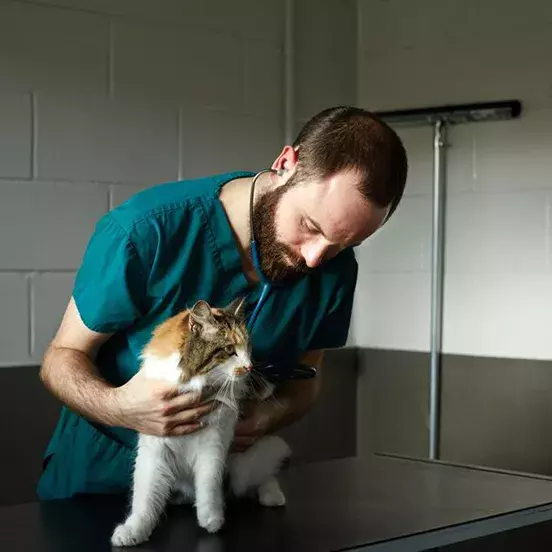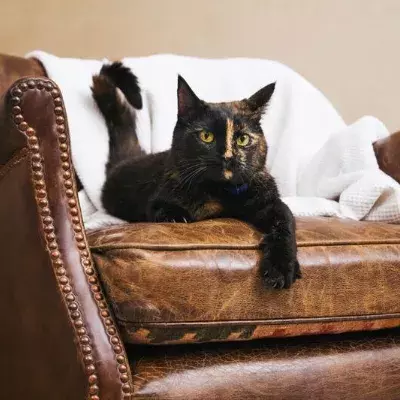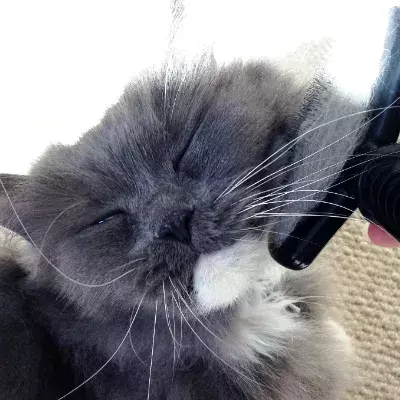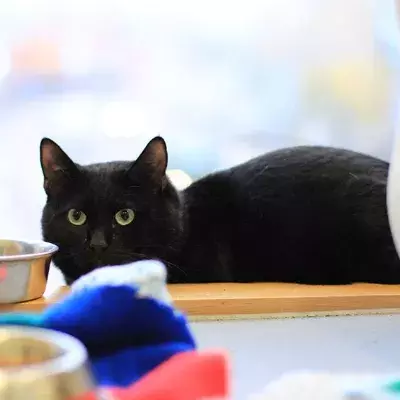Thanks to developments in veterinary care and nutrition, the life expectancy of pet cats is increasing and there are now more older cats living happy, long lives than ever before. Cats are considered ‘senior’ from the age of 11-14 years and ‘geriatric’ from 15 years upwards.
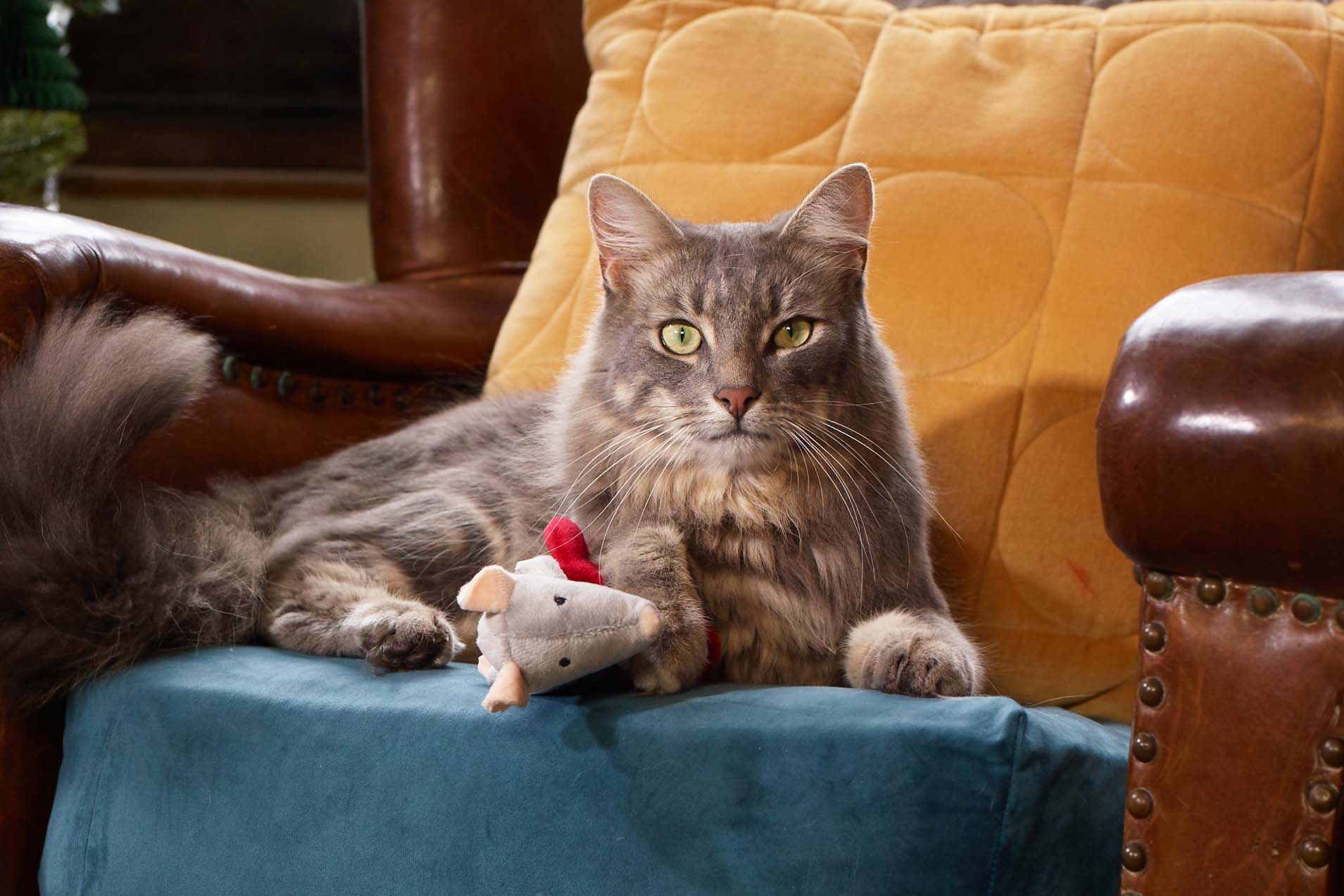
Here at Battersea, we successfully rehome many older cats from 11 years to late teens and sometimes even older. Rehoming an older cat doesn’t mean you will miss out on any of the qualities you might typically associate with younger cats. Older cats can still be as playful and certainly as loving as their younger counterparts, though they may sleep a little longer to recharge after a good play session.
In addition, older cats tend to be more homely and will often much rather relax on a cosy lap or enjoy some human company, than be out and about as much as younger cats might.
When caring for an older cat, it often helps to understand their age in human terms. After the first two years of a cat’s life, experts suggest cats age at a ratio of four cat years for every one human year:
| Age of cat | 11 | 12 | 13 | 14 | 15 | 16 | 17 | 18 | 19 | 20 | 21 |
| Human equivalent age | 60 | 64 | 68 | 72 | 76 | 80 | 84 | 88 | 92 | 96 | 100 |
Signs of ageing in cats
As cats get older, their bodies and their behaviour change and they may be more susceptible to some medical conditions. Older cats often become less active, hunt less frequently, spend less time outdoors and sleep more, and their mobility may decrease.
They may also experience other behavioural changes related to the changes happening in their body. This can include a reduced sense of smell and taste, reduced hearing and/or sight, reduced immune function, reduced ability to digest fat and protein and a lower tolerance for stress.
What to look out for in older cats
Cats are very good at hiding pain and discomfort, but important signs to look out for and seek vet advice on for your older cat include:
- Weight loss
- Increase or decrease in appetite
- Increase or decrease in drinking
- Difficulty passing urine or stools; blood in urine or stools; changes in stool consistency
- Stiffness, lameness, difficulties in jumping up
- Lethargy
- Lumps or bumps anywhere on the body or head
- Pawing at the mouth, drooling, chattering of the jaw
- Loss of balance
- Excessive vocalisation
- Toileting outside the litter tray
- Disorientation
- Any other uncharacteristic behaviour, such as hiding, aggression
As with cats of any age, it is important that your older cat visits a vet for regular check-ups, as well as routine healthcare such as annual vaccinations and regular flea and worming treatment. It’s important to watch for any changes in your cat as they get older, and to contact your vet if anything doesn’t seem right.
Making your home suitable for an older cat
As your cat reaches their senior years, they will likely require some adjustments to their home environment and their resources, which are things like their food and water, litter tray, scratching post, etc. Elderly cats can be more sensitive to change, so please bear this in mind should any of their key essential resources need to be moved. It’s always a good idea to make any changes gradually so your cat is less likely to be spooked by the adjustment.
Stairs
Stairs may become harder to negotiate, so if your home is over more than one level, it is advisable to have a litter tray, water bowl and feeding area for your cat on each floor of the home.
Food
Cats’ appetites often decrease with age, due to changes in their sense of smell and taste, so your cat may need a little encouragement from time to time. Your older cat might prefer smaller, more frequent meals, and they may also respond well to stronger smelling foods if their sense of smell is diminished.
Softer food can also be a good solution, should your older cat have dental problems, and often cats will be more eager to eat when their food is at room temperature. Some older cats will eat more when they have someone to sit with them while they eat.
Your older cat may find it uncomfortable to bend to reach their food bowls so providing a raised bowl or feeder can help, or putting their bowl on a small box or step may help encourage them to eat more.
Water
Cats of all ages should always be provided with fresh, clean drinking water each day.
Elderly cats are more prone to dehydration and the health problems which go along with this, such as chronic kidney disease, so it is essential to encourage them to drink by placing water bowls in various locations away from feeding areas and litter trays.
Some cats prefer running water, so cat water fountains can be a good solution.
Ceramic or glass bowls are best, as plastic can impair the taste of water and harmful chemicals may leech into the water. Cats like to drink without lowering their head into a bowl so wide diameter bowls filled to the brim will encourage drinking.
If your cat does not appear to be drinking much, adding a little warm water to their wet food can help provide some hydration. Flavoured water may attract your older cat too – adding a spoonful of the natural juices from roast chicken to the water or offering your cat the liquid from tinned tuna in spring water.
Litter Trays
Even if your older cat has access to a garden and has previously gone to the toilet outside, as they get older, it is essential to provide a litter tray in a quiet, secluded area inside the home. Older cats may not want to go outside in the cold, wet weather and will likely want to avoid other cats. By having an indoor litter tray, you’re also able to monitor potential health related changes, for example blood in urine or stools or changes in consistency.
Litter trays with a lowered entrance are best for an older cat as they are easier to get in and out of. An older cat also may not appreciate a covered tray, particularly with a swing door which could hit them as they enter and exit and may discourage them from using the litter tray at all.
Scratching Surfaces
As cats get older, stretching out and scratching on vertical scratching posts may place strain on their joints. It’s a good idea to provide them with horizontal scratch pads, or even spare carpet squares to help satisfy their natural desire to scratch in a way that’s more comfortable for them.
Scratching also helps them keep their claws trim. Elderly cats may be less able to retract their claws, which may then get caught in furniture, carpets and clothing. Regular claw trimming may be useful in this situation, but always seek the advice of a veterinary professional. With advice and training from your vet, it can be possible to do this at home yourself, thus avoiding a potentially stressful trip to the vet. However, if you are concerned about your cat’s tolerance for this or you don’t feel comfortable doing it, it is always advisable to include claw trimming in your cat’s routine vet checks, rather than attempt it yourself.
GROOMING AN OLDER CAT
Older cats can often find it harder to groom themselves. You can help them by regularly using a soft brush to help prevent their fur becoming matted.
Be careful not to groom too vigorously, particularly over joints, hind quarters and the spinal area, as older cats tend to become thinner in these areas and it may be painful for them in areas where bones are protruding.
Regular grooming sessions also provide an opportunity to check your cat for any lumps, bumps or abnormalities which might require veterinary attention.
In addition to grooming with a brush, as your cat becomes less flexible, you may find they need help grooming and cleaning their back end. Cats can be very particular about hygiene and your cat may be distressed if they cannot clean themselves. You can help by gently wiping the area with cotton pads moistened with warm (not hot) water.
Longer haired cats may need to be trimmed around their back end, in order to help them keep the area clean and free from matting.
With the right care and attention, sharing your home with an older cat can be one of the most rewarding and joyful experiences you could have.
The relaxed, affectionate personalities of many older cats often prove to be the perfect fit for people wanting a friendly, feline companion to come home to and curl up on the sofa with.
